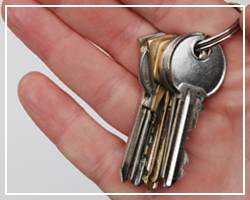Keep important areas such as your pesticide storage area locked.  Implement a system for checking facilities at the end of the day to ensure they are secured. Implement a system for checking facilities at the end of the day to ensure they are secured.
- Use high-security locks. These locks
- have keys for which the lock manufacturer controls key blanks
- require the owner to personally authorize key duplication
- are pick-resistant and tamper-resistant
- should have case-hardened steel shanks (padlocks)
- have keys that are embossed by the manufacturer with the words, “Do Not Duplicate”
- prevent unauthorized persons from having duplicates made at the local hardware store. High-security locks are a bit more trouble than standard locks, but "an ounce of prevention is worth a pound of cure...."
- Use the same brand-name locks for everything to make it easier to detect unauthorized locks. Periodically look for signs of tampering.
- Use locks with built-in, programmable keypads to secure your most valuable items. Codes can be changed easily at a momentʼs notice by the owner.
- Use hasps that fold over the screws when locked, which prevents access to the screws. Locks are only as good as the hasps to which they are attached.
Cable ties do not provide protection. They only provide an indication that the lock has been opened. Seals are effective only if there is a system in place to check and verify seal numbers. An example is the metal clip electric power companies use on meters.
|
 Implement a system for checking facilities at the end of the day to ensure they are secured.
Implement a system for checking facilities at the end of the day to ensure they are secured.